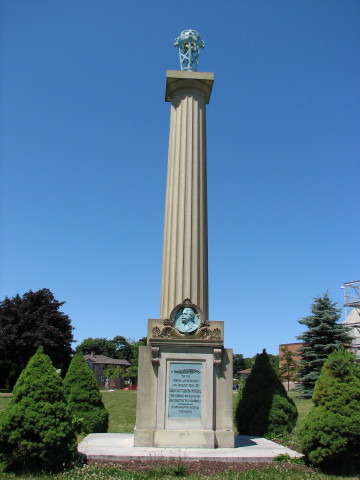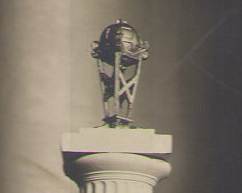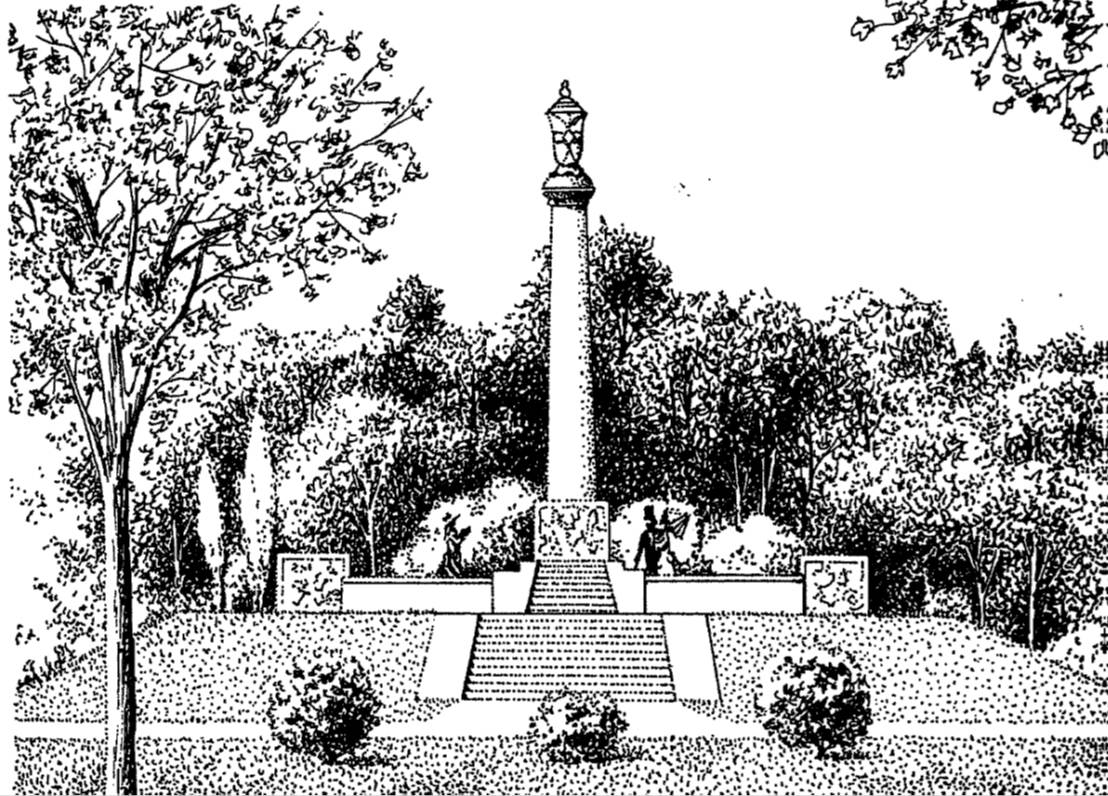Drake Well Memorial
202 Museum Lane
Titusville, Penn.
Year Built: 1907
According to an article from the Titusville Herald in 1907, Charles Brigham was present in Titusville to oversee some repairs to the Drake Monument that he had designed several years earlier. At the time, he also met with the Daughters of the American Revolution who were planning a memorial at the Drake well site.
Other articles appearing later indicated that the Drake well memorial would be designed “by a well known architect of Boston,” and it provided a nicely detailed description of the monument. It was a simple and appropriate structure: a Doric column with a globe-shaped lantern made of bronze.
Another article chronicled the general history of this proposed monument and reported that the design was abandoned because its main financial backer, H.H. Rogers, had died and that his funding would not be forthcoming.
Based on the connections of Brigham with the Daughters of the American Revolution at the time and with H.H. Rogers as well as the reference to “a well known architect of Boston,” the architect of this proposed memorial was Charles Brigham.
Nonetheless, the memorial was built. Once the Daughters of the American Revolution decided against the memorial, Brigham reconstituted the design for H.H Rogers and the memorial was erected in Fairhaven by the people of the town in 1911.
According to an article,
“The monument is in the form of a monolithic Doric shaft bearing aloft a bronze lantern in the form of a globe. The shaft rests upon a single block of stone, upon the four faces of which are bas reliefs symbolical of the departments of human activity which have been most affected by the discovery of oil—heat, light, power and locomotion. The base rests upon a stylobate of three high steps. The stylobate is in the center of a paved area surrounded by a parapet having at the four corners salient masses, upon the outer surface of which are to be cut inscriptions telling of the history of the discovery of oil by Colonel Drake and of the evolution of the industry. The whole monument is to be raised upon a sodded plateau and is to be approached on all four sides by flights of thirteen steps.
“The dimensions of the monument are as follows: plateau, 94 feet square; platform at parapet line, 52 feet; diameter of shaft, 5 feet, 6 inches; pedestal, 8 feet square; stylobate, 20 feet square; height of plateau, 8 feet; height of monument, 53 feet; total height of monument and plateau, 61 feet.
The memorial to H.H. Rogers in Fairhaven is substantially similar to this proposed memorial, except for the four bas reliefs (which are blank in Fairhaven except or the front), the sodden plateau and the flight of 13 steps. The Fairhaven memorial was originally set on a stylobate of three steps in the middle of Huttleston Avenue until 1963, but was relocated to the grounds of Fairhaven High School for safety reasons.
References
• Romance of American Petroleum and Gas, Vol. 1, A.R. Crum, editor, 1911, p. 214.
• The Drake Well Memorial Park, Paul H. Giddens, Pennsylvania History, January, 1945, Vol. XII, No. 1, p. 35.
• "Architect Brigham of Boston Here Today," Titusville Herald, July 26, 1907, p. 2.
• “The Petroleum Memorial Monument, Titusville, Pennsylvania, as Contemplated by Canadohta Chapter, Daughters of the American Revolution,” ca.1907, Brigham, Coveney & Bisbee noted.
Links
• http://www.davidjrusso.com/architecture/brigham/buildings/AddressSummary.php?id=11956995693236
Images

2007, H.H. Rogers Monument, Fairhaven, Mass.

H.H. Rogers Monument, Fairhaven, Mass.

ca.1907, courtesy of the Drake Well Museum
<<< Back to Design List
|
|
|